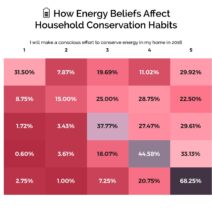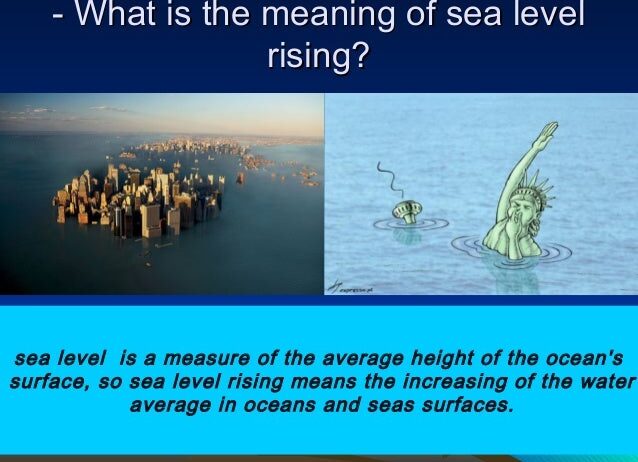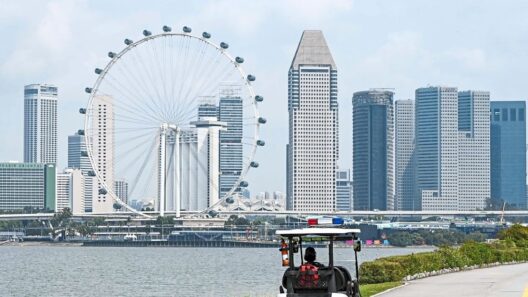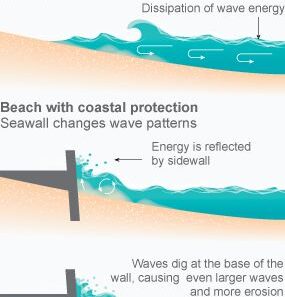As the planet warms, the cities perched on the coastlines become increasingly vulnerable to an insidious adversary: rising sea levels. Often regarded as an abstract phenomenon, this incremental elevation of oceanic bodies is akin to a tide of encroaching shadows. It is crucial to understand that rising sea levels do not merely change the landscape; they serve as a harbinger of flooding events that can devastate coastal ecosystems and communities alike.
To comprehend the relationship between rising seas and increased flooding, we must delve into the mechanisms driving these changes, the effects on various coastal regions, and the socioeconomic implications that ensue. Each of these facets contributes to creating a narrative that underscores the pressing urgency of addressing climate change.
Understanding the Mechanics of Rising Sea Levels
The phenomenon of rising sea levels is twofold, encompassing thermal expansion and the melting of glacial ice. As temperature rises, oceans expand — much like a sponge soaking up water, only this sponge is liquid and vast. The thermal expansion alone accounts for nearly half of the observed rise in global sea levels. However, the melting polar ice sheets and glaciers add significantly to this ascent, displacing millions of tons of water into our oceans.
These twin realities paint a picture of flooded futures. When ice from Greenland or Antarctica succumbs to the heat, it contributes to a relentless rise in sea levels that imposes pressure on coastal towns and cities. What may start as a mere inch can escalate into feet, altering the dynamics of our shorelines. As the oceans swell, they encroach upon the land, merging with river systems and estuaries, leading to myriad complications.
The Interplay of Storm Surges and High Tides
While rising sea levels create a baseline for flooding, they synchronize alarmingly with storm surges and high tides, creating a compound effect that is nothing short of catastrophic. A storm surge — the sudden and unusual rise in sea level due to meteorological factors, such as hurricanes — can elevate ocean levels far beyond what typical high tides present.
Imagine a cup filled to the brim with water; now consider pouring a steady stream into it while at the same time pressing down with force. The water spills over, flooding the surrounding ground. Such is the synergetic escalation of risk that climate change brings. As oceans rise, the threshold for storm impacts diminishes, rendering coastal areas more susceptible and thereby amplifying the potential for flooding.
Coastal Cities Under Siege: Case Studies
Coastal cities, the gems of cultural and economic vibrancy, face an existential threat from rising sea levels and associated flooding. Consider cities like Miami, New Orleans, and Venice. Each serves as a poignant example of what happens when the tides of change surge unexpectedly.
In Miami, the once-jerseyed veneer of vibrancy is marred as roads become rivers during unusually high tides. Recurrent sunny day flooding erodes not only the infrastructure but also the very fabric of the community. The inhabitants, accustomed to their paradisiacal existence, grapple with the reality that their homes may one day be swallowed whole.
New Orleans, beset by its geographical subsidence, exemplifies the catastrophic consequences of rising seas. After Hurricane Katrina, the city initiated extensive levee system upgrades, yet the implacable rise of the Gulf threatens to overrun these defenses. With each minor inch increase, the specter of flooding looms larger over this historic haven.
Venice, the architectural jewel of Italy, faces an existential threat as the aqueducts of time experience urban pressures compounded by rising tides. The acqua alta phenomenon, increasingly common, embodies the precarious balance this lagoon city must navigate as it fights both the tidal might of the Adriatic and the exigencies of modern urban life.
The Socioeconomic Implications of Coastal Flooding
The repercussions of rising sea levels extend beyond mere environmental concerns; the socioeconomic impact is colossal. Coastal flooding disrupts local economies dependent on tourism, fisheries, and trade. The damage from flooding can run into millions, sometimes billions, of dollars in recovery efforts. Furthermore, the economic burden can lead to the displacement of communities, posing challenges in ensuring social equity.
Insurance companies are increasingly reevaluating risks associated with coastal properties. Higher premiums and coverage restrictions follow as the potential for catastrophic flooding burgeons. This cyclical burden on the vulnerable is disturbing, inevitably creating a widening gap between those who can afford to adapt to this new reality and those who cannot.
In Conclusion: The Time for Action Is Now
The relationship between rising sea levels and flooding is not a mere geographical consideration; it is a convergence of climate science, social responsibility, and economic foresight. As the oceans rise, they act as both a mirror and a crystal ball, reflecting our past mistakes and foretelling a precarious future. To ensure the safeguarding of our coastal communities, urgent and decisive action is necessary. The continuation of our coastal civilization hinges on our ability to address this rising tide—before it envelops us whole.








